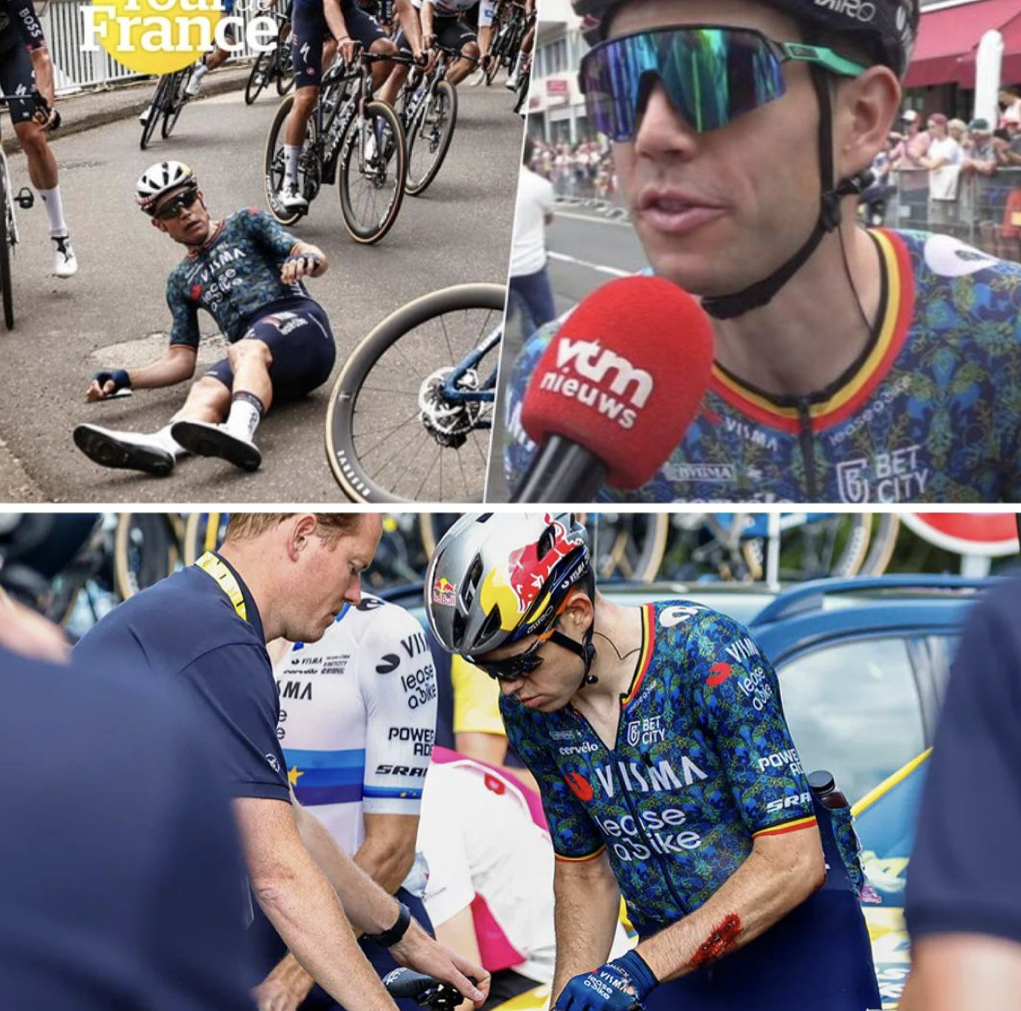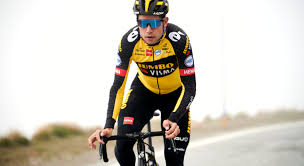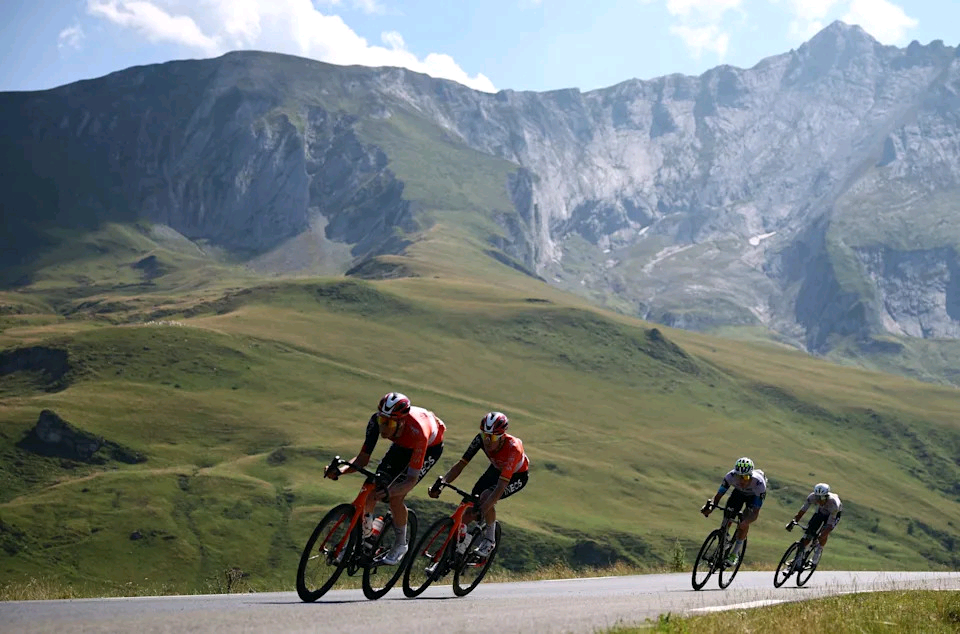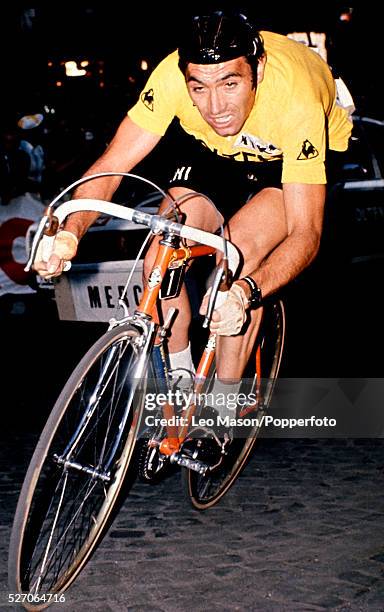**Photographer Responsible for Vingegaard’s Tour de France Accident Faces Punishment**
*An Incident That Shook the Cycling World and Led to Disciplinary Action
The Tour de France, one of the most prestigious and grueling cycling races in the world, is renowned not only for its demanding course but also for the intense media coverage and the excitement it generates among fans worldwide. However, this year’s edition was marred by an unforeseen incident involving a photographer whose actions on the route caused a serious accident involving reigning champion Jonas Vingegaard.
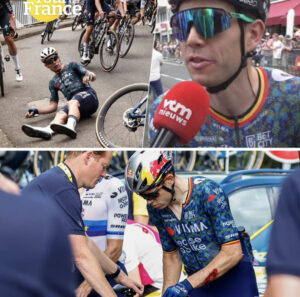
This event sparked widespread debate about safety protocols, media responsibilities, and the consequences of misconduct during major sporting events. In the aftermath, the responsible individual faced disciplinary measures, highlighting the importance of maintaining safety standards in such high-stakes environments.
The Incident: What Happened?
During Stage 16 of the Tour de France, held on July 20, 2025 chaos erupted on the race route when a photographer positioned too close to the riders attempted to capture a dramatic shot of the peloton. In a lapse of judgment, the photographer moved into the path of the cyclists, leading to a collision that resulted in Vingegaard losing control of his bike.
The accident unfolded swiftly: Vingegaard, navigating a narrow section of the course, was unable to avoid the photographer who was standing perilously close to the road. The cyclist was knocked off balance, crashing into barriers and suffering injuries that temporarily sidelined him from the race.
Immediate Aftermath
The crash caused a temporary halt in the race as medical teams attended to Vingegaard. Fortunately, he was soon stabilized and transported to the race medical center for further evaluation. While he was able to continue the race after treatment, the incident cast a shadow over the event, raising questions about safety measures and the behavior of media personnel during such high-profile competitions.
Cycling fans and professionals alike expressed concern over the photographer’s proximity to the race line and the apparent disregard for safety protocols. The incident underscored the risks posed by unregulated media activities during major sporting events.
Identification and Disciplinary Action
Following the incident, race organizers and the Union Cycliste Internationale (UCI) launched an investigation into the circumstances leading to the crash. Surveillance footage, photographs, and eyewitness accounts identified the photographer responsible as Mark Jensen, a freelance sports photographer known for his aggressive pursuit of exclusive shots.
The UCI and Tour de France organizers swiftly took disciplinary action. Jensen was temporarily banned from participating in or photographing future editions of the Tour and faced a formal inquiry into his conduct.
The Punishment
After a thorough review, Jensen was handed a substantial disciplinary penalty. The punishment included:
A six-month ban from all UCI-sanctioned events**, effective immediately.
*A fine of €10,000**, intended to serve as a deterrent for reckless behavior.
– Mandatory safety training**, emphasizing the importance of spectator and media conduct during races.
-Public apology**, issued through official channels, acknowledging the gravity of his actions and their consequences on the riders and the race.
This disciplinary measure was widely supported by the cycling community, which emphasized that safety must be prioritized over sensationalism and that irresponsible behavior could have dire consequences.
Broader Implications and Reactions
The incident prompted a broader discussion about media conduct at sporting events. Critics argued that photographers and media personnel often push boundaries to get exclusive shots, sometimes at the expense of safety. The Vingegaard crash served as a stark reminder that such behavior is unacceptable and can endanger athletes, officials, and spectators.
Cycling organizations** and race organizers responded by reaffirming their commitment to safety. They announced plans to implement stricter zones where photographers and media personnel are prohibited from entering during critical moments, especially in narrow or crowded sections of the route.
Vingegaard**, the athlete involved, publicly expressed disappointment but acknowledged that accidents happen in racing. He emphasized the importance of safety measures and called for greater respect for the athletes and the race infrastructure.
Fans and commentators** lauded the swift action taken against Jensen, emphasizing that accountability is vital in maintaining the integrity and safety of the sport.
Lessons Learned and Future Measures
In response to the incident, several key measures have been proposed and implemented:
*Enhanced Safety Zones**: Officially designated areas where media personnel can operate without risking interference with the race or athletes.
**Increased Security and Monitoring**: Deployment of race marshals and security personnel to supervise media activities and enforce safety regulations.
*Media Training and Guidelines Mandatory training sessions for photographers and media representatives on race safety, conduct, and legal responsibilities.
Technological Solutions: Use of drones and remote cameras to capture images from safe distances, reducing the need for close proximity to riders.
These initiatives aim to prevent similar incidents in future editions of the Tour de France and other major cycling events.
The incident involving the photographer who caused Jonas Vingegaard’s accident at the Tour de France serves as a sobering reminder of the importance of safety and responsibility in competitive sports. The disciplinary actions taken against Jensen reflect a broader commitment within the cycling community to uphold standards that protect athletes, officials, and spectators alike.
While media coverage is vital for the promotion and documentation of sporting events, it must never come at the expense of safety. As the sport continues to evolve, a balanced approach that prioritizes security and respect for all participants will be essential in ensuring the Tour de France remains a celebration of athletic excellence and sporting integrity.
